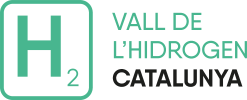The Southern Catalonia Green Hydrogen Platform, the territory’s response to global ecological challenges, with energy neutrality on the horizon, has taken structure and muscle after four months of life and is on the way to becoming a benchmark in the transition to the economy and the society of renewable hydrogen. Around one of the most important petrochemical poles in southern Europe, which will produce and consume 10 tons per hour of gray hydrogen in 2022, the Platform wants to develop, in 2030’s view, the Hydrogen Valley of Catalonia, a region that combines the generation of renewable hydrogen and its distribution for multiple industrial, mobility and residential uses in an integrated and systemic way.
The Platform holds over thirty projects of companies and entities in the territory around this energy vector, and its purpose is to have more initiatives to create sustainable social, economic and environmental value and boost energy transition. These are projects that have green hydrogen, obtained from renewable sources, as a central element, and which respond to three basic lines: mobility with the use of hydrogen, the circular economy of this energy and the basic infrastructure that it requires. Thus, the chemicals, the Port of Tarragona, the mobility around the cities of Camp de Tarragona, waste management, training and research are some of the fields of action of these projects.
With the coordination of the Universidad Rovira i Virgili, there are already about a hundred economic agents, administrations and knowledge actors involved in the initiative, among them, for their leadership alongside the university, the Institut Català de Investigació Química (ICIQ), the Institut de Recerca en Energia de Catalunya (IREC), and the Center of Technology of Catalunya Eurecat, among which has established a strategic alliance of knowledge and innovation, as well as the Associació Empresarial Química de Tarragona (AEQT), the Diputació de Tarragona, the main municipalities of the territory, including those of Tarragona and Reus, the chambers of commerce and various departments of the Generalitat. In fact, the platform has the consensus of all administrations and has already been presented to both the Catalan and Spanish Governments, which have shown the utmost support in considering it a project of strategic importance. In short, the Platform brings together all the agents that make up the hydrogen value chain to boost its knowledge, research, production, distribution and use, and continues to seek talent, projects and alliances to accompany it in this progressive economic and energy transformation.
At the moment, the Platform already appears among the 27 projects proposed by the Government of the Generalitat of Catalonia to opt for the resources of the Next Generation EU fund. These are initiatives aimed at transforming the current Catalan productive model into one of more prosperous, inclusive, resilience and sustainable, and which have the capacity to increase the competitiveness and development potential of the country. The Platform fits these plans because its goal is decarbonisation and consolidates clean hydrogen as a key energy vector to meet the climate challenge and trigger a new green economy that generates prosperity. The Platform is included, in this list of projects, under the umbrella of the so-called Hydrogen Valley of Catalonia, a broader platform that the Catalan government is pushing to include all the projects in the country that are related to it. However, it is in the south of Catalonia where the initiative has the most momentum and structure thanks to the collaboration of all the agents in the territory that make up the value chain of green hydrogen.
In parallel, it also opts for the Next Generation funds the project for the development of new technologies and processes for the production of clean hydrogen and low-cost renewable energies, coordinated by the Universitat Rovira i Virgili and with the participation of IREC, ICIQ, Eurecat, AEQT, the I2Cat Foundation, the UPC and lRTA.
On the horizon of the Platform is 2030, in which the green hydrogen generation should be very systematically integrated with its distribution and transformation and its multiple, fully consolidated uses. This must be the contribution of the territory to the objective that the European Commission sets itself for 2050, that of achieving climate neutrality. In short, deploying the economy and hydrogen society as a key energy vector in meeting the climate challenge and triggering a new green economy that generates prosperity and leads to an energy-neutral and sustainable society.
